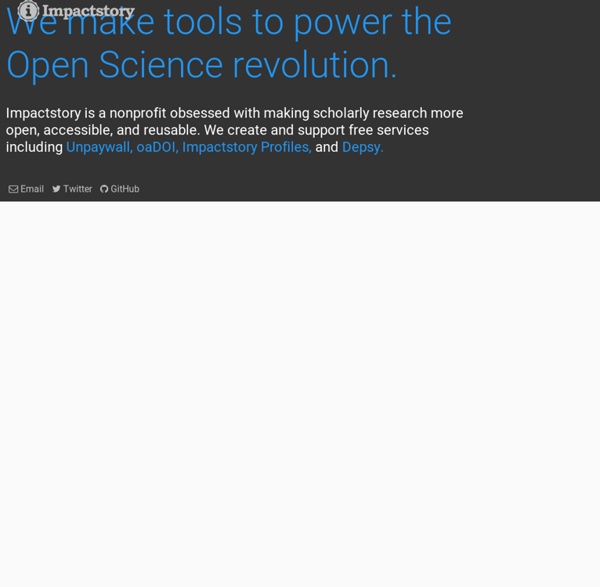



JournalReviewer Blog » Blog Archive » Social Media are important for the scienti c impact of Academic Papers Altmetrics for Librarians: Pros and Cons While digital libraries, institutional repositories, journals and databases provide an open opportunity to download scholarly research, “alternative metrics” or altmetrics supply usage statistics, which can be very useful in determining an article’s popularity and its reading potential.[1] “We may be witnessing a tipping point in collaboration, faster access, and new opportunities.”[2] Almetrics allows librarians to provide their users with statistics regarding academic articles more quickly. Altmetrics can tell us how many times an article, website, software or blog has been viewed, downloaded, reused, shared, and cited.[3] It has been noted that there is correlation between the number of online views and downloads of an article and the number of times that article will be cited in future research.[4] The pros of altmetrics And altmetrics are designed to be easy to use. Altmetric tools, both open source and proprietary, provide economic incentives for use and greater data granularity.
Journalysis Metrics Remixed: The Times They Are a Webby | InTechWeb Blog Altmetrics Correlations: We need to think about n-dimensional impact space, taken from a slide presentation by Jason Priem “See the mind at work and see the mind in work…”(from REMIXTHEBOOK review) “Until quite recently the complete justification for even the most complex scientific facts could be understood by a single person,” Michael Nielsen reminds us before describing science today as graspable beyond individual understanding. If one person can no longer understand the ways of science, then, perhaps, “a group of people” may “collectively claim to understand all the separate pieces that go into the discovery, and how those pieces fit together.” How do we correlate members of this group, are some members closer to each other, how can they collectively claim what they collectively communicate, and what pieces hold them together? Communicating is Doing the Science To Each His Flavor Altmetrics Bookmark to add to your Toolbar “Now we can listen in,” the manifesto reminds us. Like this:
Plum Analytics | Metrics Plum Analytics is building the next generation of research metrics for scholarly research. Metrics are captured and correlated at the group / collection level (e.g., lab, department, museum, journal, etc.) We categorize metrics into 5 separate types: Usage, Captures, Mentions, Social Media, and Citations. Usage - Downloads, views, book holdings, ILL, document delivery Captures - Favorites, bookmarks, saves, readers, groups, watchers Mentions - blog posts, news stories, Wikipedia articles, comments, reviews Social media - Tweets, +1's, likes, shares, ratings Citations - PubMed, Scopus, patents We gather metrics around what we call artifacts. articles blog posts book chapters books cases clinical trials conference papers datasets figures grants interviews letters media patents posters presentations source code theses / dissertations videos web pages We aggregate artifact and author level metrics into a researcher graph.
ORCID As Scholarship Goes Digital, Academics Seek New Ways to Measure Their Impact - Technology By Jennifer Howard In academe, the game of how to win friends and influence people is serious business. Administrators and grant makers want proof that a researcher's work has life beyond the library or the lab. But the current system of measuring scholarly influence doesn't reflect the way many researchers work in an environment driven more and more by the social Web. That kind of activity escapes traditional metrics like the impact factor, which indicates how often a journal is cited, not how its articles are really being consumed by readers. An approach called altmetrics—short for alternative metrics—aims to measure Web-driven scholarly interactions, such as how often research is tweeted, blogged about, or bookmarked. Audio Listen: Jennifer Howard explains why it's time for a new way of measuring scholarship's reach. (9:20) Link Photos Lissa Gotwals for The Chronicle Interest in altmetrics is on the rise, but it's not quite right to call it a movement. Mr. "I'm not down on citations," Mr.
Altmetrics – Alternative Metrics for Articles (think: impact 2.0) « Kresge Physical Sciences Library March 30, 2012 by Jane Quigley Altmetrics are metrics that attempt to capture the impact of scholarly publications as reflected in non-traditional media, – social media like blogs, Twitter, and Mendeley. Traditional works of published scholarship (articles, journals, and scholarly monographs) have citation metrics such as impact factors that reflect their impact in specific, carefully defined venues – the number of times cited by other published articles, for example. Increasingly, however, published works of scholarship are causing ripples in social media, – scholarly blogs, Twitter and the like, – that can be tracked and quantified: altmetrics. Moreover, altmetrics can be applied to non-traditional works of scholarship as well as traditional, – datasets in repositories, software, or slidesets and other curricular materials. Read more: Like this: Like Loading...
RERO DOC